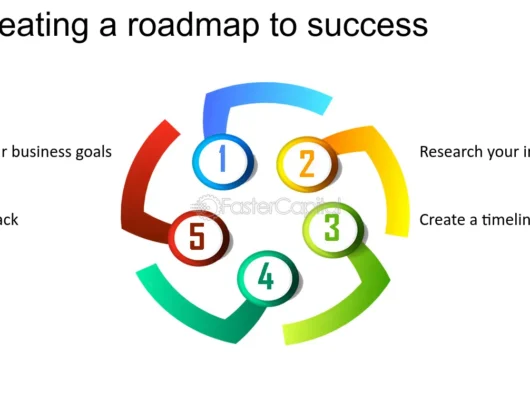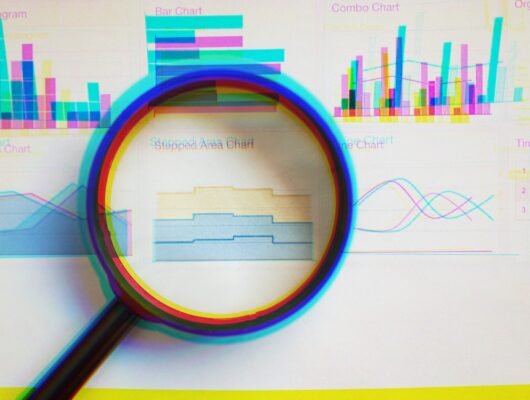Are you tired of feeling like your social media efforts are going unnoticed? Are the time and money you’re investing in these campaigns paying off? Look no further than analytics!
By utilizing data-driven insights, you can measure the ROI of your social media campaigns and make informed decisions about how to improve them.
In this blog post, we’ll show you how to effectively use analytics to take control of your social media strategy and get the results you deserve. Let’s dive in!
Introduction to Social Media Analytics
As a business owner or marketing manager, you know that social media is a powerful tool to reach new customers and grow your brand. But what’s the best way to measure your social media campaigns’ return on investment (ROI)?
Enter social media analytics. By tracking key metrics and analyzing the data, you can get a clear picture of what’s working and what’s not – and make adjustments accordingly.
I am still trying to figure out where to start. In this post, we’ll introduce you to social media analytics and how to use it to measure the ROI of your campaigns.
What is ROI (Return on Investment)?
ROI, or return on investment, is a crucial metric for measuring the success of your social media campaigns. You can see how effectively your campaigns generate leads and sales by tracking ROI.
There are several different ways to calculate ROI, but the most basic formula is to divide the value of your sales (or leads) by the cost of your campaign. This will give you a percentage that you can use to compare the performance of different campaigns.
To get more accurate data on ROI, you can also track other metrics such as engagement, reach, and clicks. By looking at these numbers in conjunction with sales data, you can get a complete picture of how each campaign is performing.
No matter which method you use to calculate ROI, it’s important to remember that social media is a long-term game. The goal is not to generate quick sales but to build relationships and create brand awareness over time.
With that in mind, keep going even if your first few campaigns don’t immediately impact your bottom line. Keep track of your data over time, and you’ll eventually see the results you’re looking for.
How to Identify and Measure Social Media Metrics
The most important thing to remember when identifying and measuring social media metrics is that not all metrics are created equal. Key metrics should be monitored closely to understand your social media campaigns’ ROI accurately.
1. Engagement rate: This metric measures the number of people interacting with your content, such as by liking, sharing, commenting, or clicking on a link. It’s a good indicator of how well your content resonates with your audience.
2. Reach This metric measures the number of people who see your content. A high reach indicates that your content is being seen by many people, which is good for brand awareness.
3. leads generated: This metric measures the number of leads (potential customers) you’ve generated from your social media campaigns. A high lead generation rate indicates that your campaigns drive interest and conversions effectively.
4. Sales: This metric measures the number of sales attributed to your social media campaigns. A high sales rate indicates that your campaigns effectively drive revenue for your business.
Strategies for Analyzing Your Results
You can analyze the results of your social media campaigns to measure their ROI in several different ways. Here are just a few of the strategies that you may want to consider:
1. Look at the Overall Reach and Engagement of Your Campaigns
One of the first things you’ll want to look at is how many people your campaigns are reaching and how engaged they are with the content. Are people liking, sharing, and commenting on your posts? Are they clicking through to your website or landing pages?
2. track conversions and sales
If you’re running social media campaigns to generate leads or sales, you’ll want to track how many conversions or sales have been made due to your efforts. This can be done using tracking codes or UTM parameters.
3. Gauge Sentiment and Brand Awareness
It’s also essential to gauge sentiment around your brand before, during, and after your social media campaigns. Are people positively talking about your brand? Are they more aware of your brand due to seeing your campaign content? You can use social listening tools to track this data.
4. Analyze Your Competitors
Finally, you’ll want to examine how your competitors perform on social media. Are they seeing better results than you? If so, what are they doing differently? You can use competitive intelligence tools to track this data.
Examples Of Companies Who Use Analytics To Measure ROI
Several companies use analytics to measure the ROI of their social media campaigns. Here are some examples:
– Coca-Cola: Coca-Cola uses analytics to track its social media campaign performance and identify improvement areas.
– PepsiCo: PepsiCo uses analytics to measure the ROI of its social media campaigns and evaluate its marketing efforts’ effectiveness.
– Microsoft: Microsoft uses analytics to track the performance of its online advertising campaigns and to determine which channels are most effective in reaching its target audience.
– IBM: IBM uses analytics to track the performance of its social media campaigns and identify opportunities for improvement.
– Starbucks: Starbucks uses analytics to track the performance of its social media campaigns and measure its marketing efforts’ impact.
Best Practices For Measuring The ROI Of Your Social Media Campaigns
There are several ways to measure the ROI of your social media campaigns. Here are some best practices to keep in mind:
1. Set clear goals and objectives for your campaign. This will help you determine what metrics to track and how to measure success.
2. Track reach and engagement. Reach is the number of people who see your content, while engagement is the number of people interacting with it. Both metrics can be tracked with most social media analytics tools.
3. Monitor website traffic. Social media can drive traffic to your website, so track how many visitors come from each platform. Google Analytics is a good tool for this.
4. Look at leads and sales. If your goal is generating leads or sales, track how many come from each social platform. Again, Google Analytics can be helpful here.
5. Determine the cost per action (CPA). This metric measures how much it costs to get someone to take a desired action, such as purchasing or signing up for a newsletter. CPA can be calculated by dividing your total campaign spend by the actions taken.
6. Compare before and after data points. Look at key metrics before and after launching a social media campaign to see if there was an increase during the campaign period. This will give you an idea of whether or not the campaign successfully met its goals.
These best practices can help you measure your social media campaign’s ROI and determine its success.
Conclusion
By leveraging the power of analytics, you can measure how effective your social media campaigns are. With detailed data on impressions, engagement rate, and ROI, you can make more informed decisions about where to focus your attention and money to get the most significant return from your investments.
Utilizing analytics helps to en Pinterest Optimization 101: Simple Strategies for Boosting Your Reach and Engagement.
Do you need help to make your Pinterest account work for you? Do your pins need to get the reach and engagement that they deserve?
Don’t worry; we’ve got you covered! In this blog post, we’ll be taking a deep dive into the world of Pinterest optimization and sharing some simple strategies that will help boost your reach and engagement.
From creating eye-catching graphics to utilizing keywords effectively, these tips will take your Pinterest game to the next level. So let’s get started!






